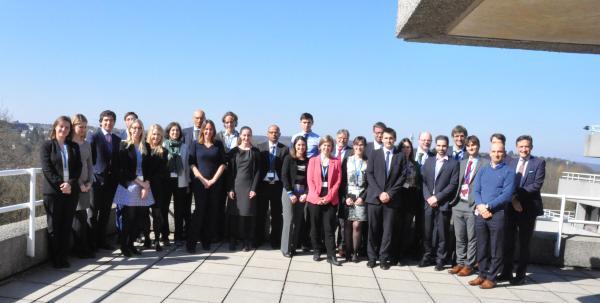
Workshop on corporate finance alternatives in Europe. Photo credit: Polyxeni Kanelliadou
On 17 March, the EIB’s Economic Department organized a workshop on corporate finance alternatives in Europe. The workshop brought together the researchers and respective institutions that are working together with ECON in preparation of the 2016 EIB Annual Economics conference, taking place on 16-17 November, and of the companion publication, the 2016 Report on Investment and Investment Finance in Europe.
The full-day workshop consisted of the presentation of 11 different papers, each followed by lively discussions. External participants represented academic institutions (Trinity College in Dublin, the Graduate Institute of Geneva, Rutgers University, USA, the Catholic University of Portugal), as well as central banks and other national institutions (Bank of International Settlements, Banca d’Italia, Banco de Espana, Banco de Portugal, and Istat, Italy),
The main takeaway is that while investment and credit supply in Europe are slowly recovering, the full impact of the recent financial and sovereign crisis is far from over and some of its legacy will be long lived. A couple of papers on the allocative efficiency of capital stressed the persisting North/South European divide in how banking sectors in both regions channel funds to productive firms. This same topic was picked up by a number of papers dealing with the specific cases of Italy, Portugal and Spain. However, those papers stressed that beyond the specifics of the respective banking sectors, firms’ balance sheets (notably their leverage) have been a power amplifier of macroeconomic shocks. That said, the same papers provided evidence of increased efficiency in credit allocation even in hard-hit economies, with banks channelling credit to more productive firms, and the resumption of credit primarily undertaken by stronger banks.
Going forward, investment activity needs to be supported by policies that address banking sector problems. Among those, the recent ECB monetary policy decisions were perceived as quite positive, but there is also a need for instruments that encourage risk-taking (such as credit guarantees) and to solve remaining NPL problems in banks. Additionally, the diversification of funding sources for investment projects beyond traditional bank lending was dealt with by a couple of papers on infrastructure investment and project finance.